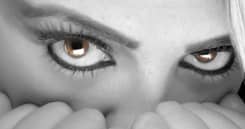Awareness of the warning signs of a loved one’s heroin addiction may help you save his (or her) life before it’s too late.
Learn about the full-blown signs and symptoms of your loved one’s Heroin Addiction in the discussion below. Drug addicts often conceal drug use, but there are few signs you can watch out for if you suspect a loved one has a heroin addiction.
Visible signs during and immediately after using heroin
Heroin is a fast-acting drug that gives a feeling of euphoria within seconds after injection. It also lessens pain because it is an opiate. Users often have needle marks on arms and legs, sniffle a lot and nod off even at day time. They usually have nausea and vomiting and make frequent trips to the bathroom. Heroin addicts don’t eat a lot, as if they have no appetite even for beverages. They don’t bond with their usual friends anymore and they often shift to a new group of friends you are not familiar with. Oftentimes, these are drug suppliers or drugging buddies.
You will notice that your loved one has suddenly become quiet with you and he (or she) seems too distant or too defensive when you ask about drug use. They look droopy, moody and disoriented especially after using heroin. Their bodies itch because of infection on injection sites and they often complain of muscle pain. Heroin overdose is also possible so it is important to watch out for slowed breathing which is a sign of respiratory depression that can lead to coma or death.

Heroin is one of the most dangerous drugs available in the United States today. It’s a highly addictive substance that traps users in its grip and does all it can to not let go.
More infoHeroin paraphernalia
Heroin users usually snort, smoke or inject the drug. Watch out for sticky black tar heroin or off-white/ dark brown powder or crumbs on your loved one’s belongings. You might find this paraphernalia commonly used by heroin users in consuming, preparing and injecting heroin:
• Aluminum foil
• Gum wrappers
• Needles/ syringes
• Pipes
• Shoelaces/rubber bands used as a tourniquet for injection site
• Silver spoons (burned)
• Small plastic bags,
• Straws
They can’t get their mind off heroin use
People with heroin addiction are so preoccupied with drug use that they neglect their daily activities, such as eating, taking a bath, going to school or work and spending time with loved ones. The most important part of their day is the time they use heroin and nothing else. Many heroin addicts also suffer from serious financial problems because they neglect work, and use their financial resources to buy the drug. Teenagers and young adults who go to school no longer perform well in their academics and extra-curricular activities. Soon after, their grades fail.
Increased tolerance to heroin
Prolonged use also builds up a person’s tolerance to the drug. The body becomes accustomed to the drug, so the person craves for a higher dose over a shorter time interval. These results in physical signs such as-
• Visible injection marks
• Infected injection site
• Eye bags
• Poor hygiene
• Runny nose
• Skin picking resulting in bruises and cuts on the skin
• Weight loss (due to malnutrition)
Withdrawal signs
A person exhibits withdrawal symptoms after reducing or stopping heroin after heavy use over an extended period of time. Sometimes, the heroin addict experiences extreme physical and mental symptoms if they do not get the next dose of heroin. Withdrawal symptoms may include- Cravings or strong desire to use: heroin Oftentimes, heroin addicts crave for the drug to reduce the pain of withdrawal Dysphoric mood. Heroin addicts are irritable, depressed and anxious during withdrawal. They yawn and tear a lot. They may complain of fever, runny nose, diarrhea, nausea, and vomiting or loose bowel movement. They are often restless and have trouble falling asleep. They may sweat a lot too.
Hawaii Island Recovery
Hawaii Island Recovery’s drug rehab program helps bring the heroin addict back to a sober life.
Want to learn more about our heroin addiction treatment program? Call (866) 491-8009 today!
 Hawaii Island Recovery
Hawaii Island Recovery 










